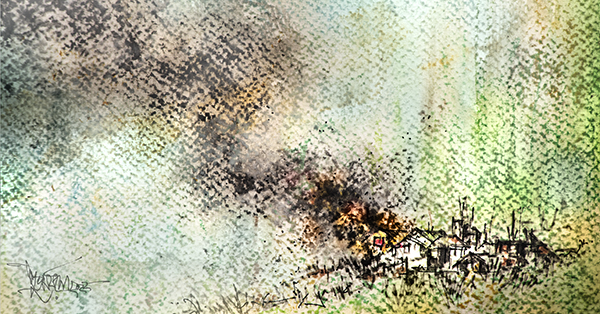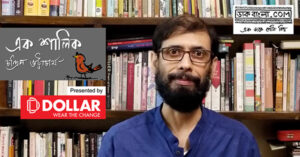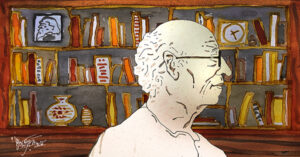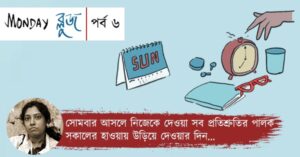Darjeeling On Fire
Preeti was the most beautiful girl on the university campus. She arrived at the department just as I was on my way out as a Masters’ student. It wasn’t just the beauty of her eyes or the perfection of her lips that made her beautiful – it was the history on it that made it attractive. What I call beauty is perhaps also a shorthand for interesting – one wanted to know more. Twenty years have passed since then, and, when I read a first draft of this book that I now hold in my hands, I felt like I finally had an idea about this history. If her history, as we discover in her book Ratanlal Brahmin: The Red Lion of the Hills, were only a private one, I wouldn’t have written about it here. It is a history of the Darjeeling hills that is rarely spoken about, and hence all the more precious in coming to us now, as we go through a period of forgetfulness about our neighbouring histories.
Remembered as ‘Maila Baje’ in the Darjeeling hills, whose political life he impacted deeply, Ratanlal Brahmin, the author Preeti Brahmin’s grandfather, was born in 1900 at Bhaktey Busty near Darjeeling’s Victoria Falls Bridge. It is not with this moment that Preeti begins her book – her memoir about her grandfather, woven with the currents of history, both public and so long hidden from view, starts from towards the end of his life, as cries of demand for a separate state, for Gorkhaland, have gathered voice, body, and movement. ‘I remember it as the month of long shadows,’ Preeti begins, and soon we are in the midst of cries of ‘Fire! Fire!’, her cousin Kundan daju and other tenants of the house ‘trying without success to douse the flames’, the ‘only landline telephone’ not working. The tension between the residents of the Darjeeling hills and its protectors, the hands of the State, is visible right away. This is how the ten-year-old Preeti saw it then:
We saw uniformed men standing yards away. A few dozen personnel had been housed in a hall at one end of the building but active participation to help douse the flames wasn’t visible on their part. … We stood shocked and helpless, screaming in our minds. Later, from the window of our aunt’s house a short distance downhill, we were compelled to witness the great fire slowly throttle, with dense smoke, and ingest with livid hunger, grandpa’s house built over a lifetime. My eyes wet, my thoughts kept returning to grandpa. ‘If only he were here! I said to myself. He would find a way to stop this.’
Beginning with this episode about fire bringing a house down assumes metaphorical dimensions when one thinks of the life of the Darjeeling hills since Indian independence, particularly in the last forty years: ‘The act of arson that night was aimed at destroying the life and culture that had formed and flourished as we had know it in that house. Grandpa tried to raise us in a culture that was pragmatic and rational. His religion was humanism’.
Beginning with this episode about fire bringing a house down assumes metaphorical dimensions when one thinks of the life of the Darjeeling hills since Indian independence, particularly in the last forty years: ‘The act of arson that night was aimed at destroying the life and culture that had formed and flourished as we had know it in that house. Grandpa tried to raise us in a culture that was pragmatic and rational. His religion was humanism’. As Krishna Singh Moktan says of Ratanlal Brahmin in the foreword to the book, ‘Maila Bajae was the first MLA to enter the Bengal Legislative Assembly in Nepali dress, i.e, Daura Surual and Khukuri … He was the first MP to sign in Nepali and make a speech in Nepali/Gorkha language in the Parliament’. As we read through his granddaughter’s affectionate and honest telling, we discover a man who was an autodidact, who did not let the disadvantages of his early upbringing, the loss of his parents in particular, affect his desire for an education, not for himself and not for those he came to see as his people. This understanding of ‘people’ he would derive from two sources: Marxism, and an independent-minded assessment of his community, of the Gorkhas, their identity, and Nepali, both language and as a marker of identity.
Preeti Brahmin shares moments such as these in her book:
The day of oath-taking dawned and he had prepared his outfit with care. He wished to attend to his duty with his attire reflecting cultural pride – daura surual and birkey topi with khukuri intact at the waist. Thus in the company of a slightly built Jyoti Basu, Ratanlal, at almost a feet taller, sauntered up to the southern entrance of the Bidhan Sabha Bhawan. Now, the gate was guarded by a white soldier, who on noticing the khukuri, seemed not to consider the twain as people’s representatives. He refused them entrance with a provoking banality – ‘Aye … bloody Indian, you cannot enter’.
I found it telling that nearly 75 years after this, the people from this part of the world often have to prove that they are ‘Indian’ in other parts of India, including its capital city.
Illustration by Suvamoy Mitra





